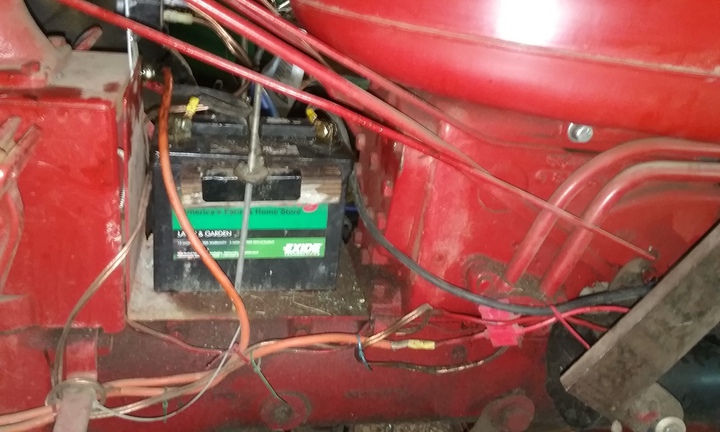Geo-TH,In
Well-known Member
After shearing off two starter drives on Jubilee and two starter drives on Farmall C. I decided to get rid of the 6v starters and install 12v. Both tractors here converted to 12v before I purchased them. I couldn't find any heavier starter drives, so decided it's time to do something different because the last drive on Jubilee chipped tooth on starter ring.
It was easy to get a 12v starter for Jubilee from YT, none available for Farmall.
That's when I decided the size of battery matters. I found a lawn mower battery that had difficult starting 23 hp Briggs. I used a 230 cca battery that was measuring 180cca. Used 10g copper for cables. Hard to believe it workes just fine for the past 3 years, even in winter. The 12v mower battery spins engine just fine. No fear of shearing starter drive. Tractor has mag and it fired on first or second crank.
On another note, I'm convenienced drsulfating works. All my batteries get desulfate many times a year. The mower battery on Farmall was bought Feb 2001. IT measured 180 cha when installed. Yesterday it showed 210cca at 40 degrees. If that isn't proof a good charger that desulfate works, nothing will.
And the size of battery and cables in this case doesn't matter. Battery just had to be good enough to get the job done.

It was easy to get a 12v starter for Jubilee from YT, none available for Farmall.
That's when I decided the size of battery matters. I found a lawn mower battery that had difficult starting 23 hp Briggs. I used a 230 cca battery that was measuring 180cca. Used 10g copper for cables. Hard to believe it workes just fine for the past 3 years, even in winter. The 12v mower battery spins engine just fine. No fear of shearing starter drive. Tractor has mag and it fired on first or second crank.
On another note, I'm convenienced drsulfating works. All my batteries get desulfate many times a year. The mower battery on Farmall was bought Feb 2001. IT measured 180 cha when installed. Yesterday it showed 210cca at 40 degrees. If that isn't proof a good charger that desulfate works, nothing will.
And the size of battery and cables in this case doesn't matter. Battery just had to be good enough to get the job done.


